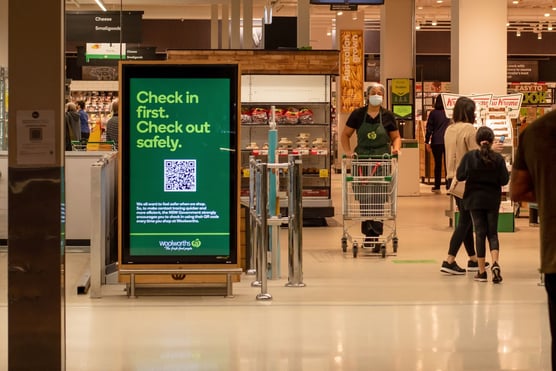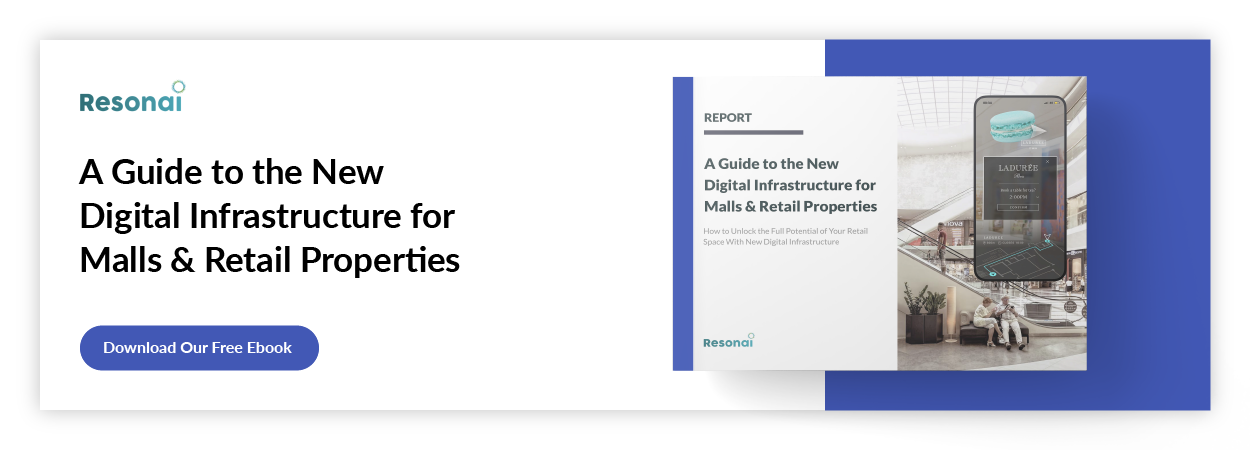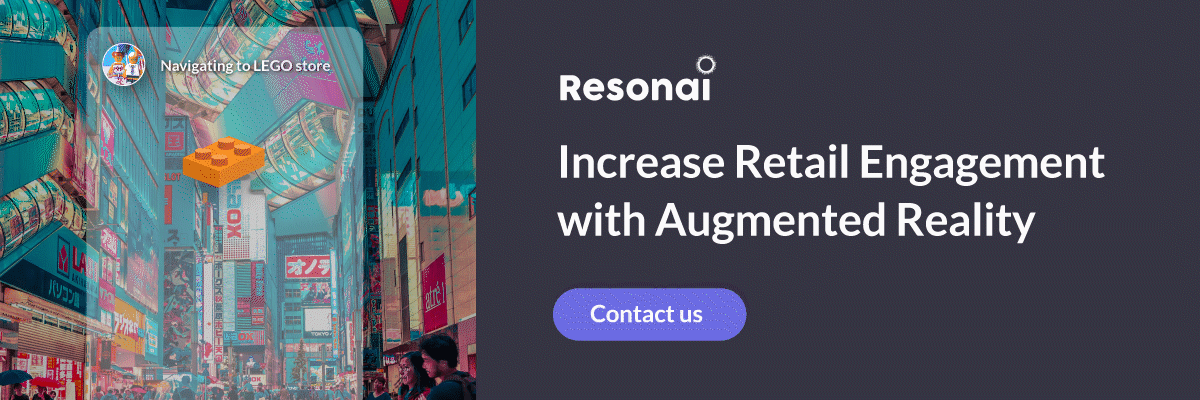4 Digital Signage Industry Trends Every Store Planner Needs to Know
When retailers stay on top of the latest digital signage industry trends, their customers gain more value from each visit.

Digital signs are a core ingredient of modern retail strategies and with good reason. The latest research suggests 80% of customers enter stores because screens catch their attention, while 40% change their buying decisions if signs offer product information. But simply installing a few displays isn’t enough — the latest digital signage industry trends suggest the technology is only effective when the screens add to a complete customer experience.
Let’s take a closer look at digital signage developments and their impact on commercial businesses.
Jump to a section
Digital signage industry trends
Personal experiences and connections
How Vera helps you keep up with digital signage industry trends
Looking for more ways to elevate your retail experience with digital signage? Check out our article, Retail Digital Signage: The Ultimate Guide.
Digital signage industry trends
Cross-industry adoption
If nothing else, the most notable digital signage trend is that digital signage is more popular than ever. A confluence of factors, ranging from the COVID-19 pandemic to the increased energy efficiency of LED screens, is driving adoption across several industries — not just retail, but also advertising, healthcare, transportation, and many more.
Recent projections suggest the digital signage market in the United States will reach $8 billion by 2028. Globally, the industry is expected to grow at a compound annual growth rate of 7.7% until it surpasses $38 billion in 2030. Between high adoption and features like network connectivity, businesses are reaping the benefits of digital signs across multiple performance indicators, including customer engagement, staff efficiency, and — most importantly — higher revenue. These digital signage industry trends point to multi-faceted competitive advantages for the businesses that embrace the technology.
Back to topQR codes
One of the more surprising retail trends of recent years is the resurgence of QR codes. Thanks to the COVID-19 pandemic, businesses have a renewed interest in contactless customer engagement, which QR codes solve for perfectly. As a result, 45% of shoppers use at least one QR code every three months, driving a 94% increase in code interactions and a 96% expansion of QR reach.
Thanks to this resurgence, retailers are realizing that digital signage and QR codes are a perfect fit. By displaying codes within digital signs, retailers create opportunities to redeem promotional discounts, sign up for social media pages, or register for loyalty plans from a contactless interface. Depending on the digital sign’s position, QR codes can also help customers complete purchases or request curbside pickups, taking pressure off in-person checkout stations.
“Digital signage to mobile device will continue to flourish,” Michael Ferrer, senior director of Solution Sales for Sharp NEC Display Solutions, told Digital Signage Today. "We've seen QR Codes make a huge comeback and help communicate messages — just scan and information comes directly to our smartphones.”
Back to topPersonal experiences and connections
One goal of modern retail is to go beyond purchases to establish one-to-one connections with each customer. Digital signage creates several opportunities on this front.
“Digital signage has evolved to a point where advertisers or sponsors can get very close to replicating an in-person conversation to connect with an audience,” Carol McGury, Smithbucklin EVP of event and education services, explained. “You see this in retail, transportation, hospitality, healthcare, education. The right content is delivered to the right audience at the right time. This is what every communicator, educator, advertiser, or sponsor desires.”
By leveraging local sensors, cloud-based network connections, and AI analysis, digital signs can precisely target visitors with personalized content. From there, customers can review recommended product offers or promotional deals without exploring the entire store. In time, digital signs may be able to provide robust customer service experiences, taking pressure away from regular staff in the process.
Back to topDigital signage and AR
As the QR trends suggest, digital signs rarely act as standalone displays. Instead, they integrate with smartphones and various in-store devices to enhance the overall customer experience. One of the most intriguing opportunities on this front is treating digital signage as an entry point for augmented reality applications. Here are just a few examples:
- Wayfinding: By strategically placing digital signs throughout the storefront, retailers can provide directions to specific products or departments.
- Virtual try-ons: Companies like Nordstrom are developing interactive “virtual mirrors” that visualize what customers look like in different clothing items and recommend complementary products.
- Product visualization and testing: Visualization options are not limited to clothing — digital signs can present furniture and appliances at scale, even when physical items are not on store floors.
How Vera helps you keep up with digital signage industry trends
Digital signs can maximize the value of any retail location if business owners understand how to integrate them with physical spaces. They can attract customers with an eye-catching call-to-action, personalize directions to each stop on a shopping list, or maximize retention using QR-driven app installs. With Vera from Resonai, retailers can leverage the latest digital signage industry trends within an AR-powered intelligent environment — helping your consumers get the most from each visit.
Are you ready to learn more? Get in touch with Resonai today and set up a free demonstration.
Subscribe to Our Newsletter!
Read More
Retail Digital Signage: The Ultimate Guide
Retail digital signage is in a period of massive growth across a wide cross-section of industries....
3 Storefront Signs Turning Foot Traffic Into Sales
Retail signage tech has evolved rapidly in recent years. The rise of digital signage, mobile...
Retail Store Signs: The Ultimate Guide
The death of in-store retail is greatly exaggerated. Despite the COVID-19 pandemic and overall...

